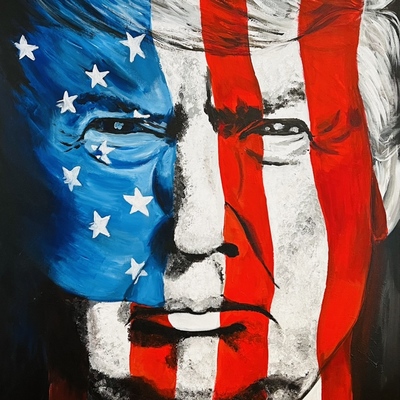Stay informed on the latest Truth Social posts from Donald Trump (@realDonaldTrump) without the doomscrolling. Consider it a public service for your mental health. (Why?)
- The United States has a long-term, large, and persistent trade deficit with the European Union.
- The trade deficit is caused by European Union tariffs and non-tariff barriers, making the relationship non-reciprocal.
- Effective August 1, 2025, the U.S. will charge a 30% tariff on all European Union products sent into the United States.
- Goods transshipped to evade higher tariffs will be subject to those higher tariffs.
- No tariffs will apply if European Union companies decide to build or manufacture products within the United States.
- The U.S. will facilitate quick approvals for European Union companies manufacturing within the United States.
- The European Union is expected to allow complete, open market access to the United States without U.S. tariffs.
- If the European Union retaliates by raising its tariffs, that amount will be added onto the 30% U.S. tariff.
- These tariffs are necessary to correct the many years of European Union Tariff and Non-Tariff Policies and Trade Barriers.
- The large and unsustainable trade deficits against the United States are a major threat to the U.S. economy and national security.
The announced 30% tariff on all European Union products, with the threat of further increases upon retaliation, represents a substantial shift in trade policy. This would likely disrupt global supply chains, increase input costs for U.S. businesses that import from the EU, and could lead to higher consumer prices. U.S. companies with significant sales or operations in the EU would face retaliatory measures, impacting their revenues and profitability. Sectors heavily reliant on European goods (e.g., automotive, luxury goods, machinery) would be particularly affected. This creates significant uncertainty for corporate earnings and could lead to a downward revision of economic growth forecasts, negatively impacting the S&P 500.
The post indicates that the trade deficit with the European Union is considered a 'major threat to our Economy and, indeed, our National Security.' The imposition of significant tariffs and the stated readiness to escalate them further if the EU retaliates could lead to a trade war, potentially straining diplomatic relations between the United States and the European Union and impacting established alliances, thereby elevating economic disputes to a national security concern.
- Commodities: Gold (XAU) would likely rise due to increased global uncertainty and flight to safety. Oil (WTI) could fall if global growth concerns rise due to trade war, but may see supply chain disruptions. Industrial metals like Copper might fall on reduced global industrial demand. Short-Term Watchlist: XAU/USD price action, oil inventory reports, headlines on EU/US trade talks. Medium-Term Focus: Global growth outlook, inflation trends (tariffs are inflationary), USD trajectory.
- Currencies (Forex): The US Dollar Index (DXY) could initially strengthen as a safe-haven asset amidst global uncertainty or weaken if the trade war negatively impacts U.S. economic growth prospects. EURUSD would likely weaken significantly due to the direct impact on EU exports. USDJPY and USDCNH might react to global risk sentiment; JPY could strengthen as safe-haven, CNH could weaken if global trade slows. Short-Term Watchlist: Fed speakers, Treasury yields, global risk sentiment. Medium-Term Focus: Central bank divergence (ECB under pressure), global growth differentials, dollar liquidity cycles.
- Global Equities: S&P 500, Nasdaq, STOXX 600, Nikkei 225, and Hang Seng would likely see significant declines due to fears of a global trade war, reduced corporate earnings, and economic slowdown. European equities (STOXX 600) would be particularly hit due to direct tariff impact. Export-oriented sectors, technology, and manufacturing would be vulnerable. Short-Term Watchlist: Futures open, VIX spike, FANG/semis/defense/auto sectors. Medium-Term Focus: Earnings revisions, macro data (ISM, PMI, trade balances), global capital flows, geopolitical overhangs.
- Fixed Income (Bonds): US 10Y and 2Y yields would likely fall due to a flight to safety, as investors seek less risky assets. The yield curve might flatten or invert if recession fears grow. Credit spreads (e.g., corporate bonds) would likely widen, indicating increased credit risk. Short-Term Watchlist: UST 10Y yield levels, TED spread, credit ETF flows (e.g., HYG). Medium-Term Focus: Fed dot plots (potential for rate cuts), fiscal concerns (if recession hits), economic surprise indices.
- Volatility / Derivatives: The VIX would likely spike significantly due to heightened market uncertainty and risk aversion. Options positioning could amplify moves, especially in sectors directly affected by tariffs. Short-Term Watchlist: VIX levels vs VIX futures term structure, 0DTE flow, SKEW index. Medium-Term Focus: Volatility regime shifts, macro policy uncertainty, systemic tail risk.
- Crypto / Digital Assets: Bitcoin (BTC) would likely behave as a risk-off asset if the narrative is economic recession, potentially initially falling with equities before finding support as a hedge against traditional financial system instability. Could also behave as a risk-on asset if global liquidity tightens due to trade war effects. Short-Term Watchlist: BTC/USD, Coinbase order book activity, funding rates, ETH correlation. Medium-Term Focus: Regulatory news, stablecoin flows, ETH upgrade progress, macro liquidity backdrop.
- Cross-Asset Correlations and Systemic Risk: Expect breakdowns in normal correlations, with equities and bonds potentially selling off together in a 'risk-off' panic. Signs of margin calls or liquidity stress could emerge. Short-Term Watchlist: MOVE index, junk bond ETFs, gold/USD co-movement. Medium-Term Focus: Shadow banking risk, central bank intervention, market plumbing stress.
- Retail Sentiment / Market Psychology: The news could trigger widespread retail anxiety and a rush to 'safe-haven' assets or a sell-off in riskier holdings. Speculation around specific affected companies or 'trade war winners/losers' could occur. Short-Term Watchlist: GME/AMC volume, Twitter/X trends, Reddit sentiment, TikTok mentions. Medium-Term Focus: Social media influence on market structure, potential for coordinated retail pushes, policy/regulatory crackdown on retail trading behavior.

